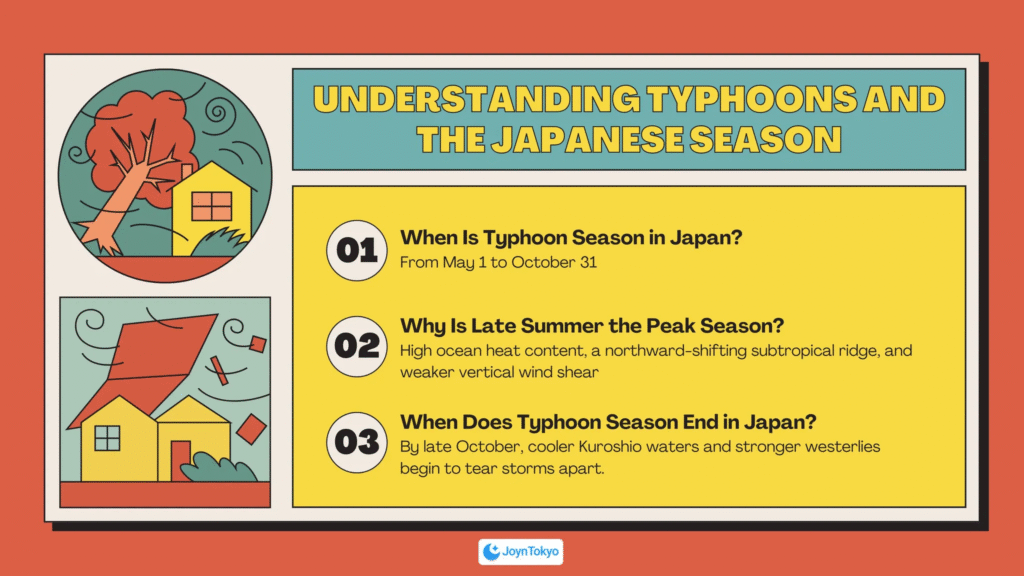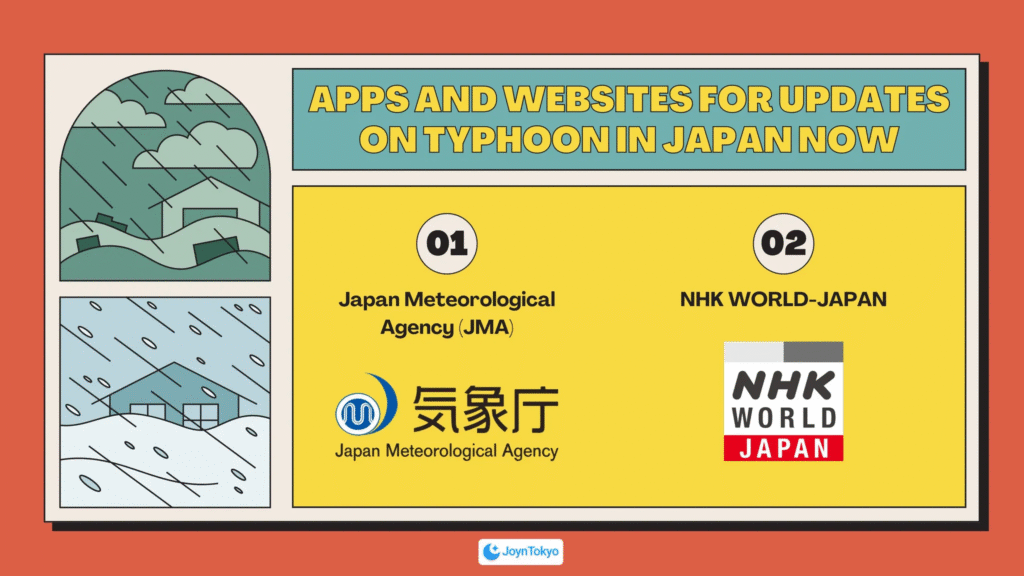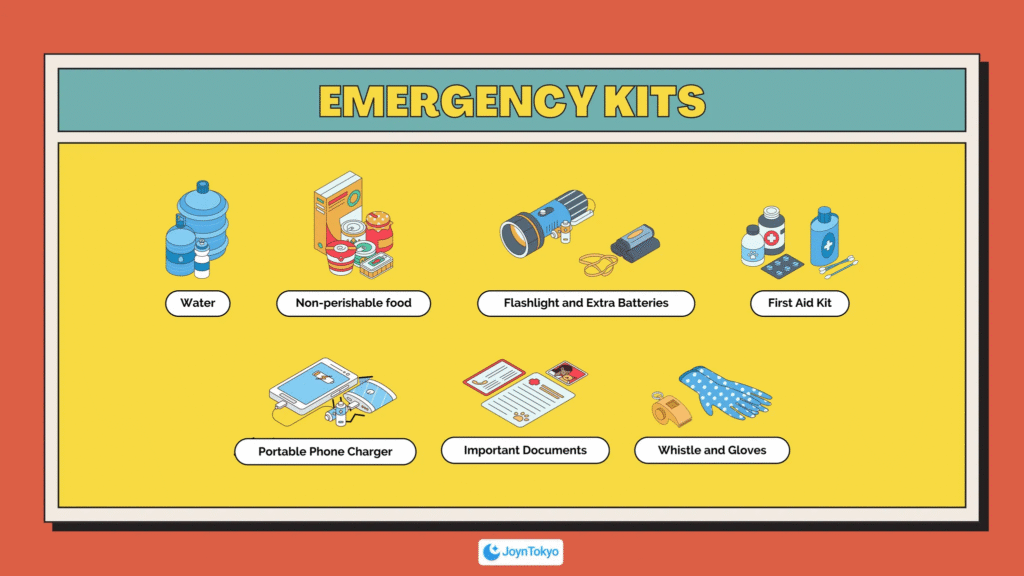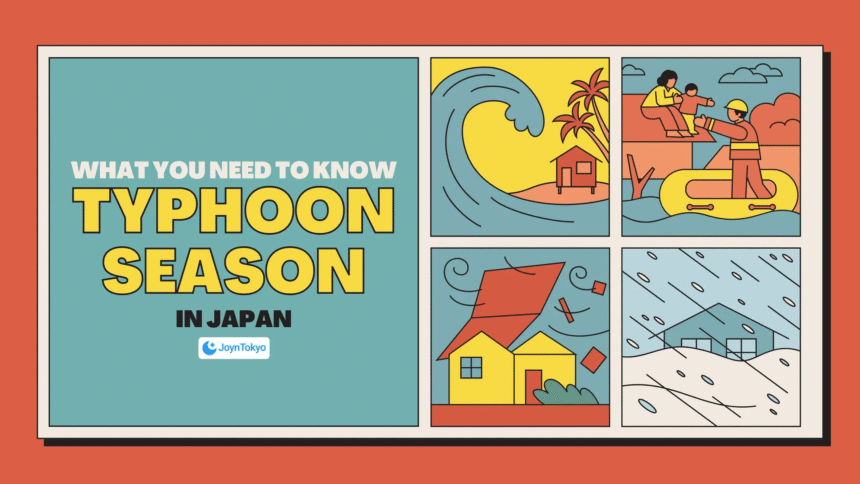At a Glance: Navigating Typhoon Season in Japan
Japan’s annual typhoon season can feel overwhelming at first, yet with a few well-chosen habits you can stay both safe and productive. Below is a swift orientation that you can revisit whenever the winds start to pick up.
Understanding Typhoons and the Japanese Season

Japan sits on the western rim of the North Pacific, the world’s busiest tropical-cyclone basin. Warm summer seas feed storm development, and the country’s mountainous terrain then squeezes out torrential rain.
When Is Typhoon Season in Japan?
Meteorologists count the official season from May 1 to October 31, though early or late storms occur every few years. Roughly 70 percent of land-falling typhoons arrive in August and September, when sea-surface temperatures peak.
Why Does the Season Peak Late Summer?
High ocean heat content, a northward-shifting subtropical ridge, and weaker vertical wind shear allow storms to intensify and curve toward Japan’s mid-latitudes. Southern islands are first in the firing line, but powerful systems can sweep as far north as Hokkaidō.
When Does Typhoon Season End in Japan?
By late October, cooler Kuroshio waters and stronger westerlies begin to tear storms apart. November typhoons are rare and usually weaken before landfall, yet stay cautious until early November if you live in Okinawa or Kyūshū.
Monitoring Storms: Real-Time Updates and Reliable Sources
Even a modest typhoon can ground flights and halt shinkansen lines for hours. Knowing where to look for trustworthy data keeps surprises to a minimum.
Apps and Websites for Updates on Typhoon in Japan Now

- Japan Meteorological Agency (JMA) “Tropical Cyclone Information” provides five-day tracks, wind probabilities, and rainfall forecasts
- Safety Tips app pushes warning levels, shelter locations, and basic phrases in 15 languages
- NHK WORLD-JAPAN livestream offers bilingual emergency bulletins
Official Alerts and Language Resources
Local governments issue five colour-coded warning levels; Level 4 (“Evacuation Order”) is your cue to move to a shelter. If Japanese text appears first, switch to the English tab or follow embassy channels on social media.
Decoding JMA Warning Levels
JMA distinguishes “Advisory,” “Warning,” and “Emergency Warning.” The last is reserved for storms statistically seen only once every few decades, such as Super Typhoon Nanmadol.
(Reference: https://www.jma.go.jp/bosai/map.html#5/34.5/137/&elem=root&typhoon=all&contents=typhoon&lang=en)
Preparing Your Home and Travel Plans
Advance planning is less about stockpiling and more about small tweaks to daily routines that add resilience.
Essential Supplies Checklist

Keep three days of drinking water, shelf-stable food, a battery pack, and photocopies of passports. Tape windows and park bicycles indoors to reduce flying debris.
Travel and Transportation Adjustments
Rail operators may announce a planned service suspension 12–24 hours in advance; Japan Rail Pass holders can reschedule without extra fees. Airlines often waive change charges once typhoon warnings are issued for an airport.
Insurance and Emergency Contacts
Check whether your home or renters’ policy covers wind and water damage; many basic Japanese plans do not. Program 119 (fire/ambulance) and 110 (police) into your phone alongside your embassy’s after-hours number.
Notable Storms in History
Past typhoons shape today’s building codes and public awareness campaigns.
The Biggest Typhoon in Japan: Typhoon Vera (1959) & 20th-Century Benchmarks

Typhoon Vera, known locally as the Isewan Typhoon, remains the deadliest on record, killing more than 5,000 people around Ise Bay. Two decades later Typhoon Tip (1979) became the most intense cyclone ever measured globally.
Recent Memory: Typhoon Hagibis (2019) and Infrastructure Resilience

Hagibis inundated central Honshū, yet casualty counts were far lower than Vera, thanks to improved levees and real-time alerts. High-speed rail resumed within 48 hours on most routes – a testament to modern preparedness.
Looking Ahead: Climate Change and Coming Typhoons
Warmer Pacific waters slightly extend the zone where storms can intensify, meaning stronger typhoons may reach higher latitudes.
Forecasting Coming Typhoon in Japan 2025 Season
Outlooks indicate near-normal to slightly above-normal cyclone numbers for 2025; the first seasonal update typically arrives in late May.
Long-Term Trends and Adaptation
Engineering reinforcements along rivers, smartphone multilingual alerts, and a growing culture of telework when warnings are issued all aim to protect lives and limit economic disruption.
Your Safety Roadmap for Typhoon Season
Typhoons are part of living in Japan, but they need not define your life here. Remember the season’s rhythm (May-to-October with an August-September peak), bookmark JMA and Safety Tips, and make incremental preparations well before winds rise. With solid information and a small emergency kit, you can weather even the fiercest storm and keep enjoying everything Japan offers.






